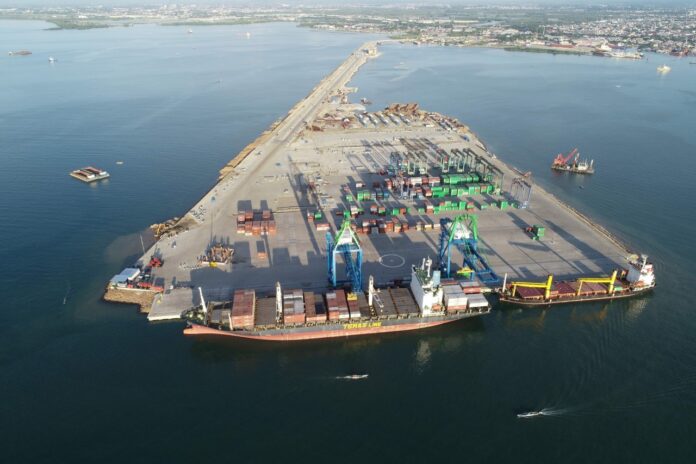Makassar New Port, recognized as a National Strategic Project (PSN), emerges as a powerful catalyst for economic growth in eastern Indonesia. The expansion of the container terminal’s capacity within this port has now reached an impressive 150%, surging from its initial 1 million TEUs (Twenty-foot Equivalent Units) to an impressive 2.5 million TEUs. This surge follows the successful completion of Port 1B and 1C at the close of the previous year.
The imperative for the establishment of Makassar New Port stems from the optimal utilization of the container terminal at Soekarno Hatta Port, which initially had a capacity of 700,000 TEUs. Enriany Muis, Regional Head 4 of Pelindo, highlights that without an increase in capacity or the initiation of a new port project, Soekarno-Hatta faced the looming threat of congestion back in 2019.
The operational history of Makassar New Port reveals that Terminal 1A began operations in November 2018. However, the container terminal, now identified as Terminal Peti Kemas New Makassar (Terminal 2), has also reached its zenith in terms of efficiency.
Terminal Peti Kemas New Makassar (Terminal 2) consistently surpasses expectations, recording an average cargo handling activity exceeding 100 percent. As of November 2023, the cargo handling achievement has escalated to an impressive 121.3 percent compared to the Company’s Work Plan and Budget (RKAP) for 2023.
Initially setting the RKAP for cargo handling at 193,287 TEUs in 2023, Pelindo Regional 4 observed robust cargo handling in the early months, prompting an upward adjustment of the target in the Revised RKAP for 2023 to 212,675 TEUs.
Marking a significant improvement, the maximum ship berthing time at Makassar New Port has been truncated to 24 hours from the prior 48 hours. Moreover, the cargo handling productivity at this port has skyrocketed from an average of 20 BSH (boxes per ship per hour) before the merger to an impressive average of 34 BSH. These noteworthy enhancements in productivity and service speed contribute significantly to Pelindo Regional 4’s outstanding achievements.
Beyond its operational achievements, Makassar New Port is strategically designed to serve as the primary port and hub for ports in Eastern Indonesia, particularly for export activities. In the past, the export of various flagship products from Eastern Indonesia, including chocolate, coffee, and wood products, primarily transpired through Tanjung Perak (Surabaya) or Tanjung Priok (Jakarta).
In a bid to fortify the connectivity of Makassar New Port with several industrial zones (hinterland) in South Sulawesi Province, the government has successfully completed the construction of a 3.21 km toll road. This road seamlessly connects various strategic points, spanning from Makassar Port (Toll Road Section 1) to Sultan Hasanuddin Airport (Toll Road Section IV) in the direction leading to MNP. This ambitious National Strategic Project incurred a cost of Rp705 billion.
Beyond these infrastructural enhancements, the government envisages further connectivity by linking Makassar New Port with the Trans Sulawesi railway line. The inauguration of the first segment of Trans Sulawesi, covering a stretch of 142 km from Makassar to Parepare, transpired on March 29, 2023. This railway line is anticipated to cut travel time from three hours to a mere half. Future plans for Trans Sulawesi involve its extension all the way to Manado, ushering in new prospects for regional development and economic growth.























